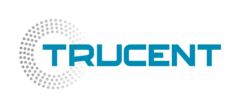
Is Your Plant’s Ultrafiltration Foulant Free?
Producers of industrial ultrafiltration systems often show customers a clear, clean liquid after a brief test running the customer’s industrial fluid through an ultrafiltration membrane. However, the reality of continuously running ultrafiltration (UF) with known membrane foulants such as oils, polymers, coatings, and blinding particulates in your industrial fluids is undoubtedly more complicated.
Let’s take the case of UF filtration for industrial wastewater. Customers regularly tell us:
- My permeate flow rate drops very quickly, resulting in frequent backwashes and CIPs (clean-in-place cycles).
- My membrane efficiency drops significantly over time despite the constant backwashes and CIPs, resulting in less permeate flow.
- I must frequently dump my ultrafiltration concentration tank, often causing significant UF downtime.
- My current ultrafiltration continuously fouls, and I cannot keep up with my plant’s waste stream. I worry that my production will stop.
- The answer can’t be to add more ultrafiltration banks—they are not working effectively now, and I hardly have any room in my wastewater treatment facility as it is.
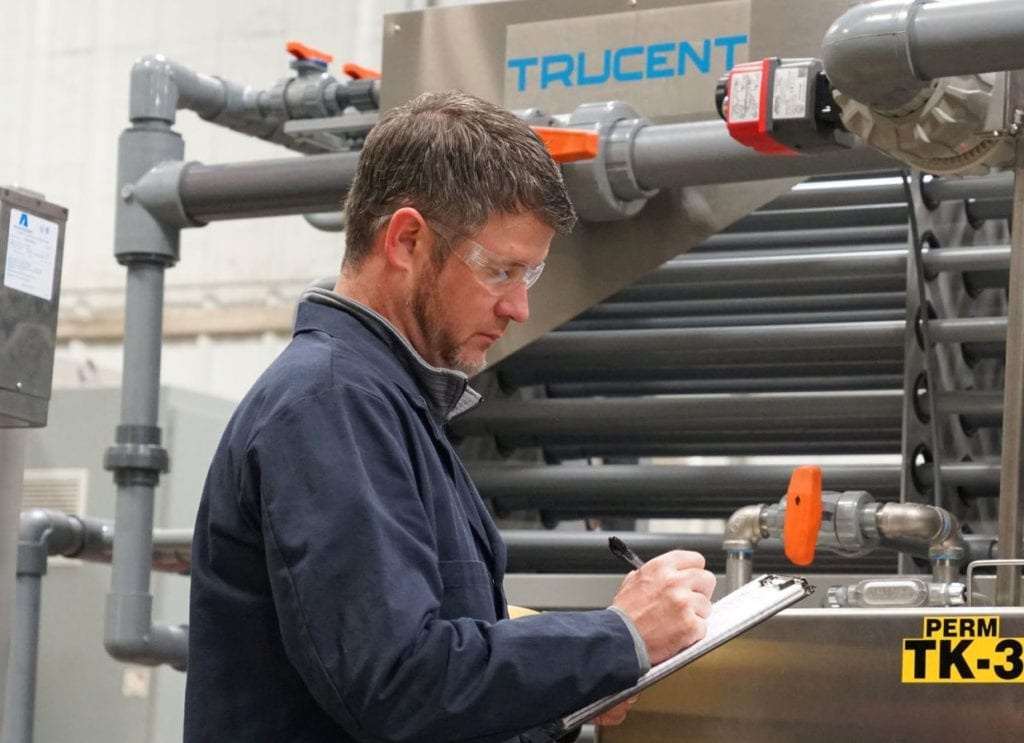
Trucent’s Approach to Ultrafiltration: Going Upstream
The secret to keeping your ultrafiltration systems running efficiently is to go upstream in your process and attack potential UF foulants before they reach your wastewater treatment facility’s ultrafiltration banks. Our approach is to identify each membrane foulant and implement a cost-effective way to remove it before it enters the waste stream. To do this, we draw from an arsenal of filtration strategies and separation equipment (e.g., non-disposable media filtration, centrifuges and separators, membranes, flocculation). The teams using these tools understand fluid separation and chemistry at a fundamental level—and understand your specific fluids, processes, and industry. Then, just before the stream reaches your ultrafiltration membranes, we can add additional dialysis on your UF concentration tank, removing oils and particulate foulants that may have bypassed the upstream point source approach.
Finally, we can help you manage the waste streams generated during this process. When managed properly, ultrafiltration can be a highly effective, efficient, and effortless finishing step in your wastewater treatment process.
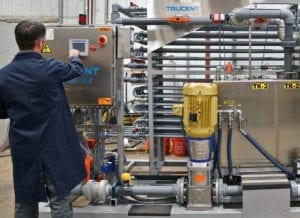
And you can have all this with no additional strain on your resources. Our operations team can maintain the entire solution on an ongoing basis. With the largest fleet of separation assets, including ultrafiltration in North America, we are ready to take care of your needs. No one else offers this level of comprehensive service with UF membranes.
Every solution begins with a conversation. Contact us today to begin that conversation, or to schedule a no-obligation on-site consultation. We’ll walk your entire plant, sampling fluids throughout, then take them back for lab analysis before designing your solution. We’ll trial that solution at your site with your membrane system or ours to be sure it is proven out in the real world before you commit to it.
Additional Benefits to Ultrafiltration
- You can often reuse the water in your processes, thus minimizing total water usage, and further reducing the burden on your wastewater treatment facility and your UF system. Typically, water usage is reduced by 30-60%.
- UF can improve the efficiency of other components of your wastewater treatment system, such as DAFs (Dissolved Air Flotation), coalescers, settling tanks, etc.
- You can regularly reuse your captured process fluids such as metalworking fluids and wash solutions rather than throwing them into your waste stream, resulting in significant additional savings.
- Our approach can result in a cleaner water stream and significantly less landfilled waste, positively impacting the environment. (Read more about Trucent’s Environmental Approach)
Ultrafiltration Beyond Industrial Wastewater
Ultrafiltration systems can handle more than just industrial wastewater. For example, we’ve built integrated equipment that combines ultrafiltration with high-speed centrifugation on a single skid for specialized applications where particulate and oil contamination are essential to control, such as final wash water for engine blocks and transmissions.
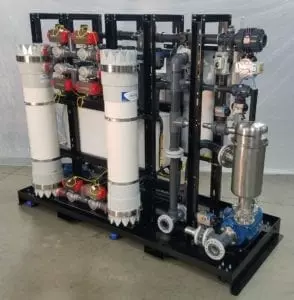 We use a variety of ultrafiltration, nanofiltration, and microfiltration membranes to not only remove foulants, but to fractionate fluids into components that can be reused or resold as valuable streams rather than just sending them to waste.
We use a variety of ultrafiltration, nanofiltration, and microfiltration membranes to not only remove foulants, but to fractionate fluids into components that can be reused or resold as valuable streams rather than just sending them to waste.
We are also continuously working on removing other potential foulants, such as salt ions (calcium, magnesium, etc.) and emulsified fluids. We are researching more effective demulsification processes to handle emulsified products that will not pass through a membrane and flocculation and coagulation techniques to remove additional potential foulants from waste streams. By combining chemistry, separation equipment, expertise, and experience, Trucent can do what no other company can in the membrane filtration space.
Ultrafiltration 101
Ultrafiltration is a pressure-driven process, where untreated water is forced against a semipermeable membrane. This membrane allows water molecules to pass through while screening out particles (colloids, bacteria, and so on), much like a sieve.
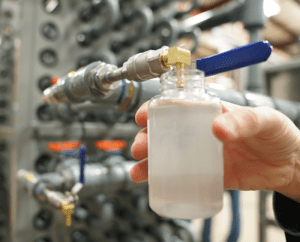
Because these extremely fine membranes clog so easily, UF membrane systems are usually set up so that the feed travels across the membrane (so-called “cross-flow” configuration). UF membranes also rely on periodic “backwashing,” where the flow is reversed through the membrane to knock loose the filter cake building up on the membrane surface.
UF membrane technology generally captures organics with molecular weights greater than 1,000, while passing ions and smaller organics, and will filter particles in the 0.002–to–0.1-micron range (in other words, UF fills the gap between reverse osmosis and microfiltration).
But capturing such fine particles also means capturing everything else—including foulants. UF filters are incredibly prone to membrane fouling. Even with proper cross-flow and regular backwashing cycles, UF modules regularly operate at less than 60 percent efficiency where foulants are present. As a result, in plants that rely on ultrafiltration for their effluent, their on-site wastewater treatment system is usually just days away from being overwhelmed.
Downloads
Comprehensive Purification and Filtration Solutions & Services
Trucent provides comprehensive solutions to your fluid separation and ultrafiltration challenges. We can help you improve your existing solution—or design an entirely new one. We can install one piece of equipment or an entire team to manage all your filtration technology on an ongoing basis. The goals remain the same: Cleaner fluid streams, greater efficiency, less downtime, and a high return on your investment.

Metalworking Reclaim Saves $400,000 Annually
A transmission component supplier had dozens of independent machine tools, each with its own sump. Their existing filtration system was unable to maintain appropriate purity specs, forcing them to frequently “top off” their metalworking fluids. This approach overwhelmed the sumps, sending perfectly good metalworking fluid down the drain.
A Trucent team introduced a new approach to fluid management that included reengineering the customer’s centralized purification system. This approach reduced their coolant concentrate usage by 60%. Consequently, the customer documented decreases in waste treatment costs and water usage. In just four months they saved $30,000 in tooling costs.

Related Solutions, Services & Products
Solutions
Services
Client-Site Services
Committed to Service
With the largest fleet of separation technology, advanced engineering, and chemistry capability across a wide array of industries and experienced operations personnel throughout North America, you can count on us when you need us most.
- 9 Service Locations Across North America
- The Largest Fleet of Separation Technology
- Over 150 of Fluid Experience

